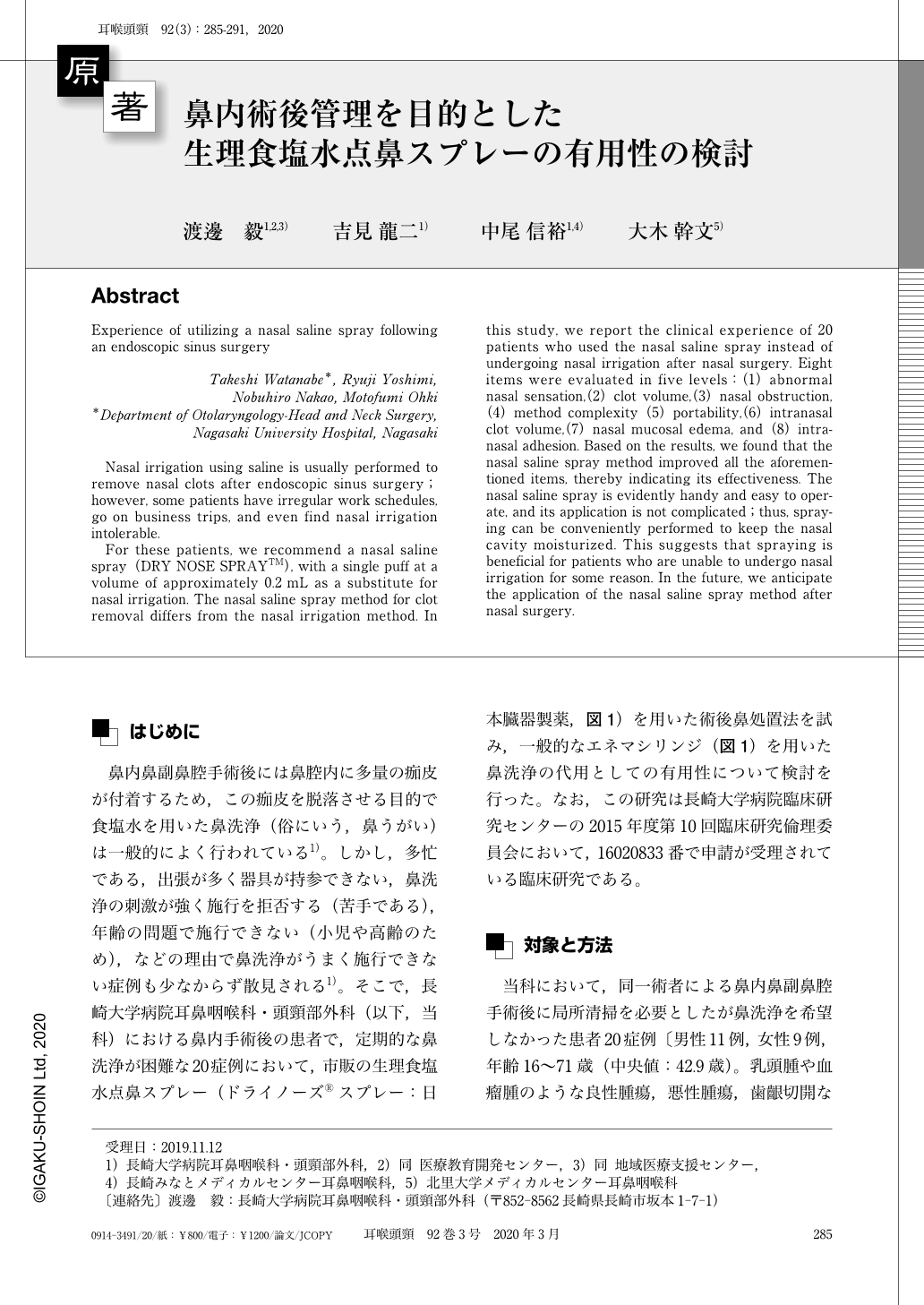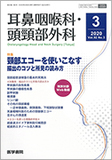Japanese
English
- 有料閲覧
- Abstract 文献概要
- 1ページ目 Look Inside
- 参考文献 Reference
はじめに
鼻内鼻副鼻腔手術後には鼻腔内に多量の痂皮が付着するため,この痂皮を脱落させる目的で食塩水を用いた鼻洗浄(俗にいう,鼻うがい)は一般的によく行われている1)。しかし,多忙である,出張が多く器具が持参できない,鼻洗浄の刺激が強く施行を拒否する(苦手である),年齢の問題で施行できない(小児や高齢のため),などの理由で鼻洗浄がうまく施行できない症例も少なからず散見される1)。そこで,長崎大学病院耳鼻咽喉科・頭頸部外科(以下,当科)における鼻内手術後の患者で,定期的な鼻洗浄が困難な20症例において,市販の生理食塩水点鼻スプレー(ドライノーズ®スプレー:日本臓器製薬,図1)を用いた術後鼻処置法を試み,一般的なエネマシリンジ(図1)を用いた鼻洗浄の代用としての有用性について検討を行った。なお,この研究は長崎大学病院臨床研究センターの2015年度第10回臨床研究倫理委員会において,16020833番で申請が受理されている臨床研究である。
Nasal irrigation using saline is usually performed to remove nasal clots after endoscopic sinus surgery;however, some patients have irregular work schedules, go on business trips, and even find nasal irrigation intolerable.
For these patients, we recommend a nasal saline spray(DRY NOSE SPRAYTM), with a single puff at a volume of approximately 0.2 mL as a substitute for nasal irrigation. The nasal saline spray method for clot removal differs from the nasal irrigation method. In this study, we report the clinical experience of 20 patients who used the nasal saline spray instead of undergoing nasal irrigation after nasal surgery. Eight items were evaluated in five levels:(1)abnormal nasal sensation,(2)clot volume,(3)nasal obstruction,(4)method complexity(5)portability,(6)intranasal clot volume,(7)nasal mucosal edema, and(8)intranasal adhesion. Based on the results, we found that the nasal saline spray method improved all the aforementioned items, thereby indicating its effectiveness. The nasal saline spray is evidently handy and easy to operate, and its application is not complicated;thus, spraying can be conveniently performed to keep the nasal cavity moisturized. This suggests that spraying is beneficial for patients who are unable to undergo nasal irrigation for some reason. In the future, we anticipate the application of the nasal saline spray method after nasal surgery.

Copyright © 2020, Igaku-Shoin Ltd. All rights reserved.


